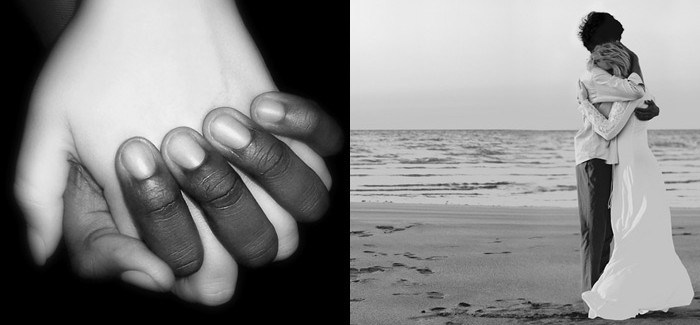Interracial Marriage: Then and Now - Divorce Help
How times have changed. In the past century the United States has seen advancement in the rights and freedoms of women, African Americans, and an impending shift in the legal views of homosexuals. Of course, historically in the U.S. it was unions between whites and Blacks that received the most attention and controversy. But it isn’t only Black and white mixed couples who have fought hard for their relationships to be recognized and respected, but men and women from all races who wanted to publicly express their love for one another. Today, social and cultural views, as well as national laws, have created a major public transformation in interracial marriage.
The Supreme Court heard a case in 1967 that would change the course of U.S. marriage laws forever, and played a key role in the progression of the civil rights movement. Eleven years after mixed-race spouses Richard and Mildred Loving were convicted under Virginia’s law that banned mixed marriages, the Supreme Court overturned the state’s decision as well as any other state laws in the nation that prohibited interracial unions. Only three years earlier did the Supreme Court rule that laws which ban interracial sex were unconstitutional.

 Chief Justice Earl Warren wrote for the court, among other things: “The Fourteenth Amendment requires that the freedom of choice to marry not be restricted by invidious racial discriminations. Under our Constitution, the freedom to marry, or not marry, a person of another race resides with the individual and cannot be infringed by the State.”
Chief Justice Earl Warren wrote for the court, among other things: “The Fourteenth Amendment requires that the freedom of choice to marry not be restricted by invidious racial discriminations. Under our Constitution, the freedom to marry, or not marry, a person of another race resides with the individual and cannot be infringed by the State.”
This landmark case opened the door for virtually all interracial couples to legally marry, however it wasn’t until 2000 that the Alabama State Constitution finally eliminated its unenforceable ban in Section 102. Interracial views in the deep south were slow to change. After three decades of interracial marriage being legal in all 50 states, Alabama’s public voted with a surprisingly close outcome to remove the language in the section that said: “The Legislature shall never pass any law to authorise or legalise any marriage between any white person and a Negro or descendant of a Negro.”
The Pew Research Center recently carried out a study that examined Census data to reveal the shift of interracial marriage occurrence over the span of the last decades. The results show an expected jump in interracial marriage rates from 1980 (the first year from which Census data on interracial marriage is publicly available). Though reliable Census information was not available from the year 1967, the year in which interracial marriage became legal in all 50 states, it can be estimated that less than half of one percent of marriages were mixed-race. In 1980 a mere three percent of U.S. marriages were interracial. Fast forward 30 years to 2010 and one in 12 marriages are interracial – about 8.3 percent. That number rises with every changing year – new marriages in 2010 among spouses with a different race or ethnicity hit a record-breaking 15 percent.
While in 1986 only one-third of Americans had a positive or accepting view of interracial marriage, today more than a third of the population says that an immediate or close family member is married to someone of a different race. These increasing numbers can be partially attributed to the legality of interracial unions, shifts in tolerance and the influx of Latinos in the second half of the 20th century.
 Paul Taylor, executive vice president of the Pew Research Center, said “If you think about the last half-century, interracial marriage has evolved from being illegal in many states, to merely a taboo, to merely unusual, and with each passing year it becomes less unusual.”
Paul Taylor, executive vice president of the Pew Research Center, said “If you think about the last half-century, interracial marriage has evolved from being illegal in many states, to merely a taboo, to merely unusual, and with each passing year it becomes less unusual.”
States in the West, where there are more Asian and Hispanic immigrants such as Hawaii, Nevada, New Mexico and California, remain the sates with the highest rate of mixed-race marriages – a great deal higher than the national average, at more than one in five. In our current decade, Asians and Hispanics are the most likely to tie the knot with someone of a different race, at 25 percent. Next, 17.1% of African Americans are expected to marry a spouse of another race, compared to 9.4% of whites. Black men have been found two times more likely to marry someone outside of their race than Black women, while Asian women are twice as likely to marry outside their race than Asian men.
The Pew study also tracked the rate of divorce among mixed-race and single-race couples. Analysis of the data found that the collection of information cannot be confined to simply mixed-race and single-race marriages – the rates depend on specific race combinations. For example, white women who marry outside of their race are the most likely to divorce, especially if their spouse is African American. When it comes to race, second highest risk marriages are between Hispanic-white couples. This can be for a number of reasons, from longstanding lack of family acceptance, to greater gaps in cultural norms that lead to differences in opinions about child-rearing, religion, etc.









Submit a Comment